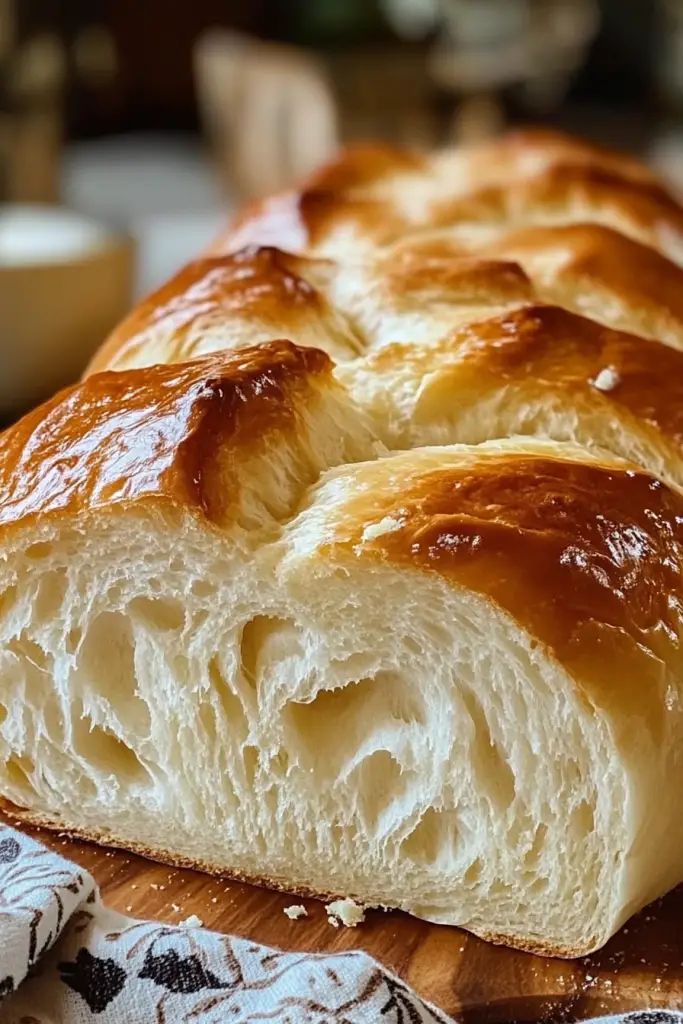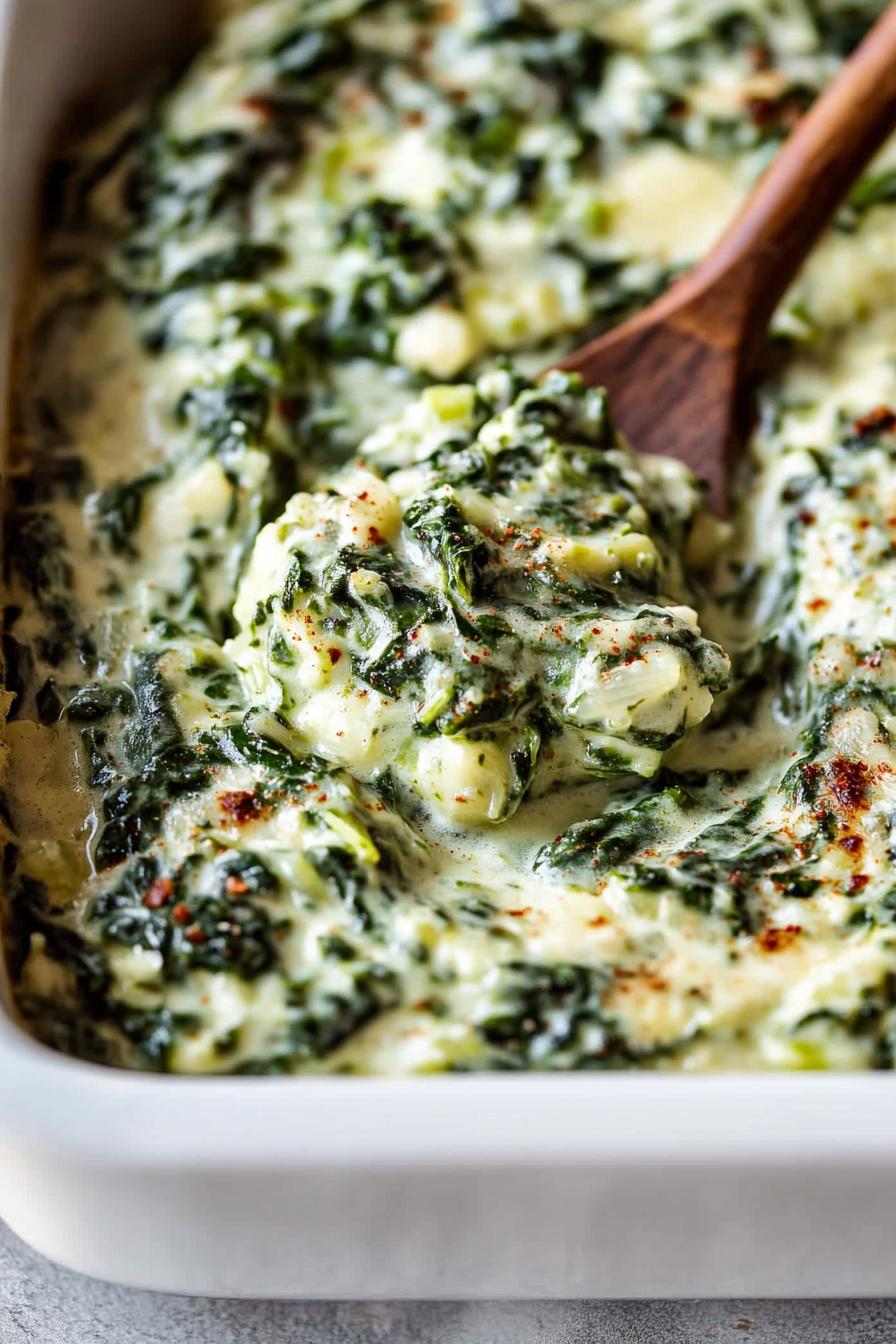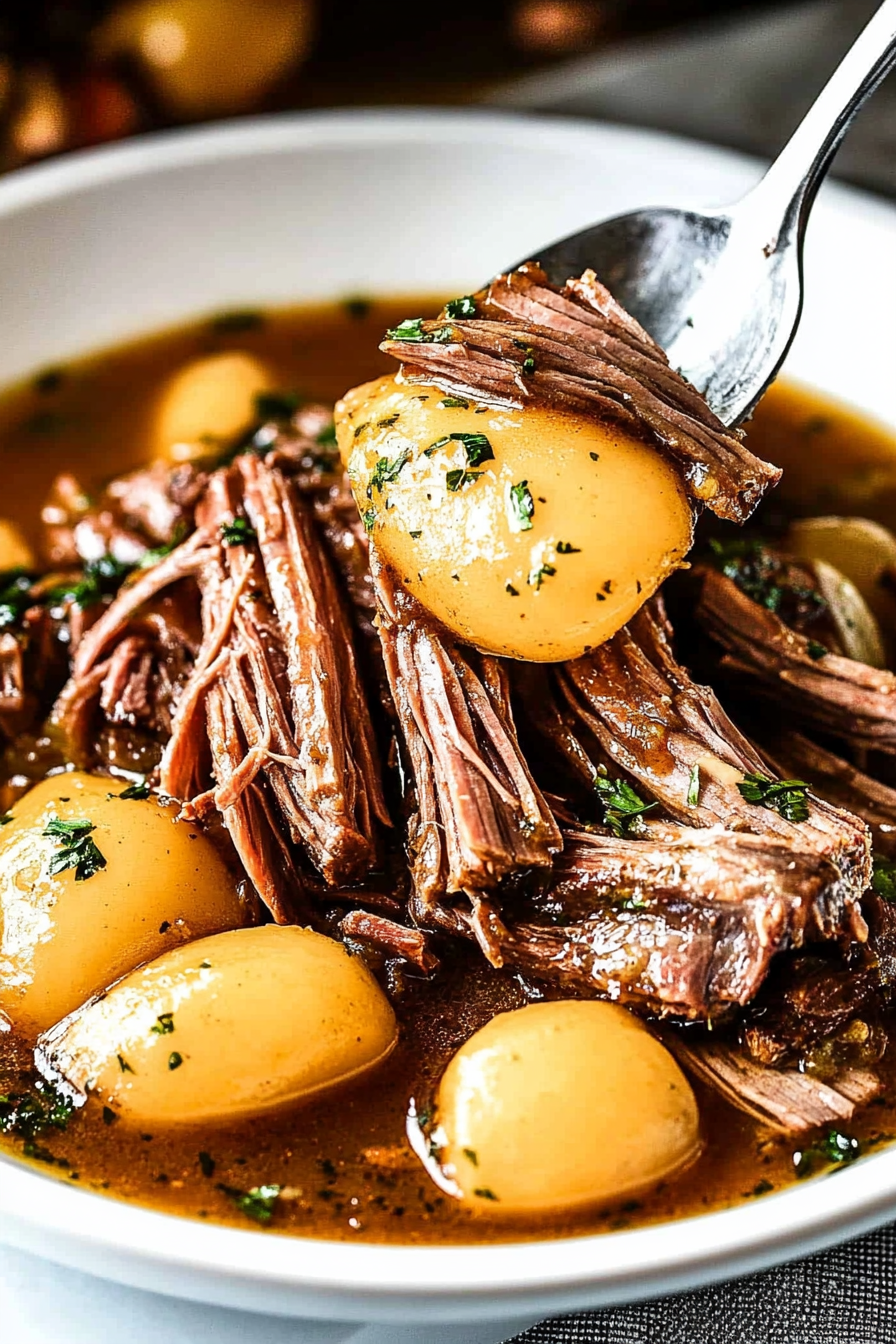I grew up with the smell of bread cooling on the counter every Saturday morning. The kitchen would glow in the early light, coffee steamed in cups, and my mom’s flour-dusted hands moving in quiet confidence. That memory is why I keep coming back to this homemade bread: a loaf that feels like a hug, simple as a sigh, and utterly reliable. It isn’t trying to outshine a fancy bakery loaf; it’s the one you reach for when you want warmth without ceremony. It pairs with jam on bright mornings, with soup on chilly afternoons, and with butter that melts into the crust like a secret. This isn’t a showpiece—it’s the everyday hero that disappears from the basket in minutes at my house, and the kitchen smells like home for hours after the oven cools. I’ve tested this with a splash of olive oil, a touch more honey, and even half whole-wheat flour, and the best part is: it always feels like mine, the kind you’ll crave again and again.
What is home made bread?
Think of this homemade bread as the soft, reliable backbone of countless meals. It’s essentially a simple yeast-leavened loaf with a crisp crust, a tender crumb, and the kind of versatility that makes you want to slather on jam or dunk a slice into soup. The name is straightforward because that’s exactly what it is: a no-fuss loaf you can bake any day of the week, then customize with herbs, cheese, or a swirl of garlic oil if you’re feeling fancy. It’s the kind of bread that listens to your cravings—pull it from the oven hot and tasting like sunshine, or let it cool and turn it into perfect little toast points. My favorite thing about this bread is that it forgives you when life gets busy; you’ll still produce something comforting and delicious, even if you skip a step or two. It’s the bread I reach for when I want home in a bite-sized form.
Why you’ll love this recipe?
What I love about this loaf is how forgiving it is. It’s not a finicky
- Flavor:The crust is caramelized and toasty, the crumb is soft with a gentle chew, and there’
- Simplicity: There’s no overnight starter or 28-hour proof. You mix, rise, bake, and you’ve got bread on the table in a single afternoon.
- Cost-efficiency: The ingredients are pantry staples, so you’re not chasing hard-to-find items. A little yeast goes a long way, especially when you let it do its job.
- Versatility: This loaf plays nicely with both sweet and savory twists—think honey butter, herbs and garlic, or a sprinkle of grated cheese on top.
What makes this recipe truly stand out is how it fits real life. It’s not only about a perfect loaf; it’s about the moments around it—watching your kids grab a slice while it’s still warm, hearing the crust crackle when you press it with the buttered knife, and knowing you’ve got dinner covered with something you made by hand. If you’ve ever wished bread could be both comforting and quick, this is your answer. It’s a lifesaver on busy nights and a reminder that simple ingredients can create something that tastes like a hug.
How to Make Homemade Bread
Quick Overview
This loaf comes together with a straightforward rhythm: mix dry ingredients, whisk wet ingredients, combine until a shaggy dough forms, and give it a good knead until smooth. A short, gentle rise follows, then you shape it into a loaf, let it rest briefly, and bake until the crust turns a warm amber. The result is a bread that smells like childhood and tastes like sunshine. The beauty is in the balance—enough hydration to keep it soft, enough structure to slice neatly, and enough patience to let the flavor develop. You don’t need special equipment; a sturdy mixing bowl, a clean counter, and a reliable oven are all you’ll really need.
Ingredients
For the Main Dough:
- 3 cups (360 g) bread flour or all-purpose flour, sifted for lighter texture
- 1 1/2 cups warm water (110°F/43°C is ideal; adjust as needed)
- 2 teaspoons instant yeast (or 1 packet active dry yeast, proofed in a splash of warm water)
- 1 1/2 teaspoons salt
- 1 tablespoon sugar or honey (optional, for a touch of sweetness and browning)
- 2 tablespoons olive oil or melted butter (for softness and flavor)
For the Filling (Optional):
- 2 tablespoons olive oil mixed with 1 clove minced garlic and 1 teaspoon chopped fresh herbs (rosemary or thyme) for a fragrant swirl
- 1/2 cup grated cheese (parmesan, cheddar, or gruyère) if you want a cheesy bread twist
- Salt and pepper to taste, plus optional crushed red pepper for a little kick
For the Glaze (Optional):
- 2 tablespoons melted butter with a pinch of salt
- 1 teaspoon honey or maple syrup for a glossy finish
- Water or milk to adjust glaze consistency
Step-by-Step Instructions
Step 1: Preheat & Prep Pan
Heat your oven to 375°F (190°C). Lightly butter or oil a standard loaf pan, then dust with a little flour or line with parchment. A hot pan helps the crust develop that lovely color and crackle we crave. If you’re planning a swirl, have a sheet of parchment ready to help you roll the dough later. I like to set a small bowl of water near the counter; sometimes a touch more humidity helps the dough rise more evenly in the kitchen’s dry air.
Step 2: Mix Dry Ingredients
In a big bowl, whisk together the flour, yeast, salt, and sugar. I find that a gentle whisk helps distribute the yeast so you don’t get dense pockets in the crumb. If you’re using instant yeast, you can mix it right in with the flour; if you’re using active dry, give it a quick bloom in a little warm water and a pinch of sugar first, about 5 minutes, until it’s foamy and alive.
Step 3: Mix Wet Ingredients
In a separate bowl, combine warm water with the olive oil or melted butter. If you’re adding honey, whisk it in here so it dissolves evenly. The warm liquid wakes up the yeast and starts the dough’s journey toward a tender crumb. Keep an eye on the temperature—the goal is warm, not hot; you don’t want to kill the yeast.
Step 4: Combine
Pour the wet mix into the dry ingredients and stir with a wooden spoon or dough whisk until a shaggy dough forms. It will feel soft and a little sticky, which is exactly what you want. Turn it onto a lightly floured surface and knead it for 6–8 minutes, until it becomes smooth and elastic. If the dough sticks, sprinkle in a touch more flour, but be careful not to overdo it—you’re aiming for a gentle, supple dough, not a stiff one.
Step 5: Prepare Filling
If you’re going for a swirl, roll the dough into a rough rectangle, brush with your garlic-herb oil, and sprinkle with cheese or herbs. Roll it up tightly along the short edge to create a long log. Pinch the seam and tuck the ends under so the loaf holds its shape during baking. Let the dough rest for about 15 minutes to relax, which makes it easier to shape.
Step 6: Layer & Swirl
If you’re not filling, simply shape the dough into a loaf. For a swirl, place the roll seam-side down in the pan or bake free-form on a sheet if you prefer a crustier exterior. A gentle press along the seam helps the loaf keep its shape. A light dusting of flour across the top gives that rustic finish when it bakes.
Step 7: Bake
Bake for 30–35 minutes, until the crust is deep golden and the loaf sounds hollow when tapped on the bottom. If your oven runs hot, you may need to cover the top with foil after 20 minutes to prevent over-browning. An internal temperature of about 195–200°F (90–93°C) signals doneness if you’re using a thermometer. If you filled the loaf, you’ll notice a fragrant aroma and the swirls pulling away from the pan edges as it bakes.
Step 8: Cool & Glaze
Let the bread rest in the pan for about 10 minutes, then transfer to a cooling rack. If you’re glazing, brush with the melted butter-honey mixture while the loaf is still warm, so it soaks in slightly and shines beautifully. The glaze adds a touch of sweetness and keeps the crust from feeling too dry after a day or two, if it lasts that long in your kitchen.
Step 9: Slice & Serve
Allow the loaf to cool completely before slicing for the neatest texture. A serrated knife makes clean, even cuts. My family loves it with a pat of butter or a smear of jam, and dipping a crust in olive oil and balsamic is a favorite quick snack. Serve warm, sturdy slices with a steaming mug of tea or coffee, and you’ve got yourself a little moment of bliss on a weekday afternoon.
What to Serve It With
There are as many ways to enjoy this loaf as there are meals in a week. Here are a few easy ideas that feel special without much effort:
For Breakfast: Toasted slices with butter and homemade jam, a drizzle of olive oil, and a coffee mug warming your hands. I often slip a few herbs into the butter to make the morning feel like a tiny celebration. Fresh fruit on the side and a mug of creamy latte complete the scene.
For Brunch: A little platter with sliced bread, Cream Cheese, smoked salmon, capers, and a sprinkle of dill. Fancy without being fussy, and the bread holds up beautifully to creamy toppings and crisp toppings alike.
As Dessert: A light drizzle of lemon curd or a smear of Nutella, alongside berries and a dollop of Whipped Cream. The warmth of the bread makes the chocolate and citrus sing together in a comforting, cozy way.
For Cozy Snacks: Warm bread with a shallow pool of olive oil, a pinch of flaky salt, and a few chili flakes if you want a little kick. It’s the perfect side for tomato soup or a simple bowl of chili on a cold night. Trust me on this one—this loaf is a lifesaver on busy nights.
Top Tips for Perfecting Your Homemade Bread
[Expert advice organized by technique:]
Flour & Hydration: If your kitchen is dry, you may need a touch more water. I like to start with 1 1/2 cups and add a tablespoon at a time if the dough seems stiff. Flour brands vary, so it’s normal to adjust by a tablespoon or two. Whole-wheat or rye? Start with a portion (1/3 to 1/2) of whole-grain flour and keep the rest as bread flour for a lighter crumb.
Mixing & Kneading: You’re aiming for a smooth, elastic dough that passes a simple windowpane test—stretch a small piece until it’s thin and translucent without tearing. If it tears easily, give it a bit more kneading. Long kneading isn’t always better; gentle, rhythmic kneading often yields the best texture.
Swirl Customization: For a prettier swirl, roll the dough into a rectangle, brush with your oil-herb mixture, then sprinkle cheese. Roll tightly from the short edge and seal well. You can bake it seam-side down or tuck the seam under for a neat loaf top.
Ingredient Swaps: Want a dairy-free loaf? Use olive oil instead of butter and skip the glaze. For a richer crumb, add a tablespoon of olive oil and a touch more honey. If you don’t have honey, maple syrup works too. The crumb adapts nicely to these small changes.
Baking Tips: If your oven runs hot, place a sheet of foil over the loaf after the first 20 minutes to prevent over-browning. If you’re using a silicone loaf pan, you may need a minute or two more. You want a deep golden crust that gives a gentle crack when you press it.
Glaze Variations: A simple glaze can be made with melted butter and a touch of honey. For a savory finish, brush with olive oil and sprinkle flaky salt while still warm. A splash of cream on top before baking can create a glossy, delicious crust as well.
Storing and Reheating Tips
Bread loses its best qualities when it sits too long, but with proper storage you can keep that fresh-baked feel for days. Here’s how I handle it in practice:
Room Temperature: Wrap cooled bread tightly in a clean tea towel or parchment, then place in a breathable container for 1–2 days. If you want a softer crumb, wrap more snugly; if you love a crusty finish, keep it a bit looser to breathe.
Refrigerator Storage: Refrigeration can dry bread out quickly, so I don’t recommend keeping it in the fridge for more than a day or two. If you must, wrap well and use within 2–3 days for best texture.
Freezer Instructions: Slice the loaf and freeze in a stacked, tightly wrapped bag. Thaw at room temperature or toast slices directly from the freezer for a quick breakfast. This is great for meal prep and keeping a stash on hand.
Glaze Timing Advice: If you’re freezing, skip the glaze to avoid soggy texture on thawing; rewarm gently and brush with glaze or butter after reheating for a fresh finish. If you’re storing at room temperature, glaze soon after cooling for a glossy, tasty crust.
Frequently Asked Questions
Final Thoughts
There’s something endlessly comforting about a loaf that you can almost taste the moment you wake up—warm, land-to-table bread that makes any meal feel special. This homemade bread is not about perfection; it’s about warmth, memory, and the simple thrill of pulling a loaf from the oven that fills your kitchen with scent and your heart with a smile. If you’re new to bread, this is a gentle place to start—no sourdough tangs or long fermentation times to fear, just a trustworthy, nourishing loaf you can rely on. After you bake it, tell me how you like to serve it: with jam, with soup, or as a sturdy foundation for a quick afternoon cheese plate. I’d love to hear your twists and what you pair it with. Happy baking!

Homemade Bread
Ingredients
Dough Ingredients
- 3.5 cups all-purpose flour plus more for dusting
- 2.25 teaspoons instant yeast
- 1.5 teaspoons salt
- 1.5 cups warm water about 105-115°F (40-46°C)
- 2 tablespoons olive oil plus more for greasing
Instructions
Preparation Steps
- In a large bowl, whisk together the flour, yeast, and salt.
- Add the warm water and olive oil. Stir with a wooden spoon until a shaggy dough forms.
- Turn the dough out onto a lightly floured surface and knead for 5-7 minutes, or until smooth and elastic.
- Lightly grease a clean bowl with olive oil. Place the dough in the bowl, turning to coat. Cover with plastic wrap and let rise in a warm place for 1 hour, or until doubled in size.
- Punch down the dough and shape it into a loaf. Place the loaf on a baking sheet lined with parchment paper.
- Preheat your oven to 375°F (190°C).
- Bake for 30-35 minutes, or until the crust is golden brown and the bread sounds hollow when tapped on the bottom.
- Let cool on a wire rack before slicing and serving.
Notes
Featured Comments
“Impressed! Clear steps and comforting results. Perfect for busy nights.”
“New favorite here — absolutely loved. crowd-pleaser was spot on.”
“Super easy and turned out amazing! My family asked for seconds. Saving this one.”
“This sweet treat was absolutely loved — the light really stands out. Thanks!”
“Made it tonight and wow — family favorite! Will definitely make homemade bread again.”
“Packed with flavor and so simple. Exactly what I wanted from homemade bread.”












